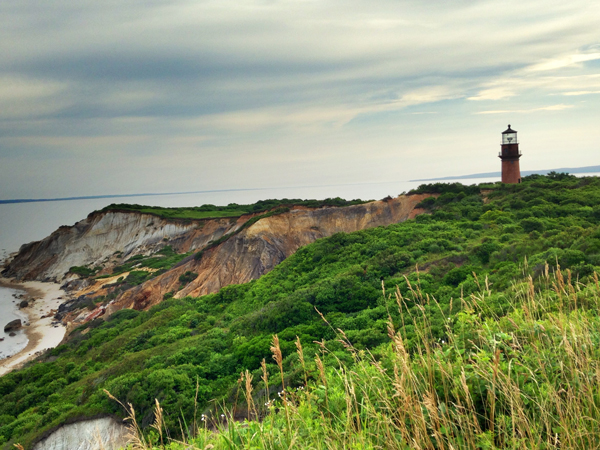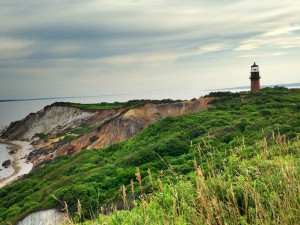By Adam Markham, director, Climate Impacts Initiative, Union of Concerned Scientists
In summers past I’ve spent many delightful hours on the beach south of Gay Head Cliffs on Martha’s Vineyard, but until this year, I’d never given any thought to the threat climate change represents to the iconic lighthouse that’s perched on top of the cliffs.However, this past winter, whilst researching a UCS report about climate threats to cultural heritage sites I discovered that the National Trust for Historic Preservation had listed the Gay Head Light as one of America’s most endangered historic places. Gay Head’s famous clay cliffs are rapidly eroding, sped by accelerating sea level rise. The lighthouse is now less than 50 feet from the edge. Experts say it needs to be moved back from the brink within the next two years or it will simply topple into the sea.
An island’s dynamic relationship with the sea
The coast of Martha’s Vineyard, with its exposed bluffs, barrier beaches and ponds has always been in a dynamic relationship with the sea, but the changes that human-driven climate change are bringing have no parallel in the recent past. Global average sea level has risen about 8 inches between 1880 and 2009, while the rate of increase has markedly increased, especially since 1993, and is still accelerating. Due to a variety of local factors, the stretch of the East coast of the United States from Cape Hatteras in North Carolina up to Maine has some of the fastest rates of sea level rise in the world.
In addition to sea level rise, the Northeast has experienced a greater increase in extreme precipitation since 1958 than any other region of the country, with more than a 70% increase in rainfall during the heaviest events. The National Climate Assessment also recently concluded that there is a growing risk of stronger storms in the Northeast. All of these changes are contributing to the rate at which the Gay Head Cliffs are eroding. The combination of sea level rise and storms can be particularly lethal, bringing higher waves and more wave energy crashing against the shore.
Click here to read full article.

